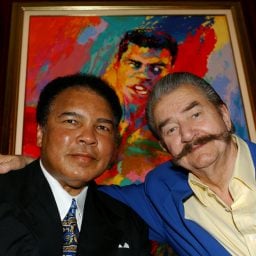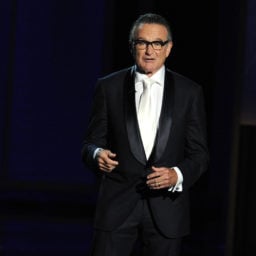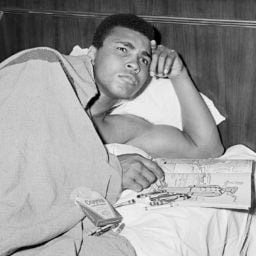Rare original artworks by Muhammad Ali, the boxer known as the G.O.A.T., or “Greatest of All Time,” are heading to the auction block at Bonhams New York.
Headlining the “TCM Presents…It’s a Knockout!” sale on October 5 are 24 Ali artworks from the collection of his friend, Rodney Hilton Brown. As the owner of Hilton Fine Arts, Ltd., Hilton Brown was the publisher for a set of limited-edition silk-screen prints by Ali in 1979. (More recently, he authored the new book Muhammad Ali: The Untold Story: Painter, Poet and Prophet.)
Outside of his fame as a champion athlete and his renown as a dedicated activist, Ali, born Cassius Clay, always had a strong connection to the visual arts, which stemming from his father, Cassius Clay Sr., a professional artist.
As a child, [Ali] had helped his father, who painted altarpieces for Baptist churches, as well as signs and billboards, throughout Kentucky, Bonhams director of entertainment memorabilia Helen Hall told Artnet News. Four of the elder Clay’s landscape paintings are included in the sale, also from Hilton Brown’s collection, and are estimated to fetch between $2,000 and $3,000 apiece.
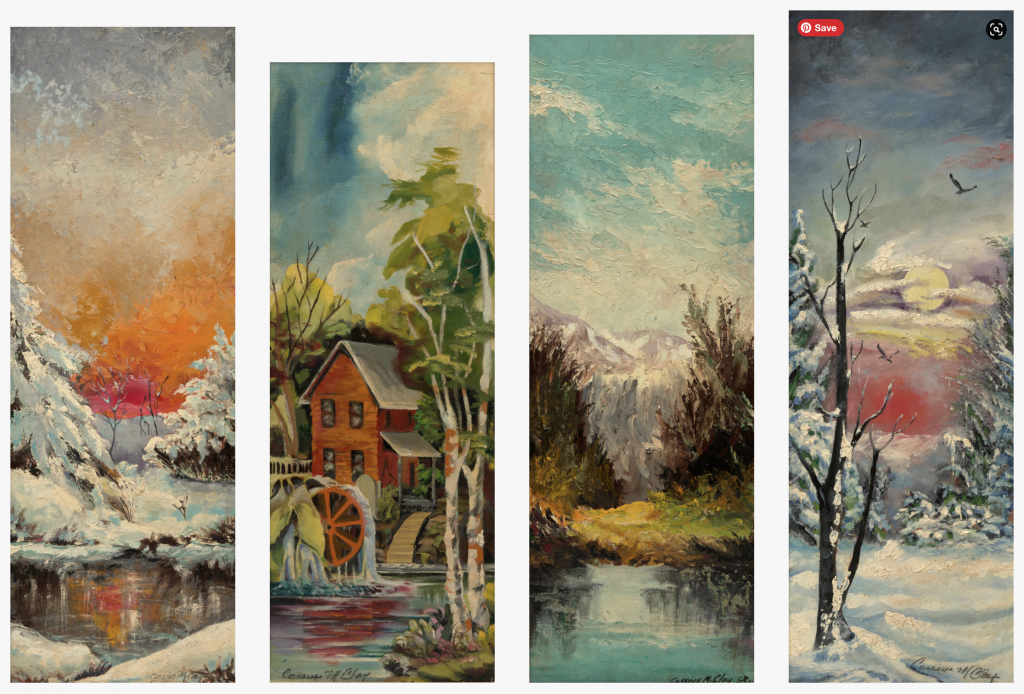
Four paintings by Cassius Clay Sr., father of Muhammad Ali and a professional artist, are estimated at $2,000 to $3,000 each. Photo courtesy of Bonhams New York, collection of Rodney Hilton Brown.
During his sports career, Ali became close friends with the artist LeRoy Neiman, who documented many of the fighter’s boxing matches in drawings and paintings. When they first met in 1962, Ali approached Neiman, who was busy sketching his practice session in the gym, and grabbed a pencil, adding his own touch to the drawing. That collaboration, which helped ignite Ali’s interest in art-making, was included in a 2017 show about the two men at the New-York Historical Society.
Ali and Neiman often drew side by side while they were hanging out, but it was some years before the boxer made his artistic talent more widely known. In 1967, the athlete produced a series of drawings for Avant Garde magazine, inspired by his passion for civil rights activism.
“Ali’s work fits into the realm of Outsider Art, but the wonderful thing about his artwork is that he poured into them those subjects that were close to his heart,” Hall said. “The Avant Garde magazine sketches reference the civil rights struggle that Ali experienced firsthand, with one piece referencing directly the Watts race riots of 1965 and the Newark race riots of 1967.”
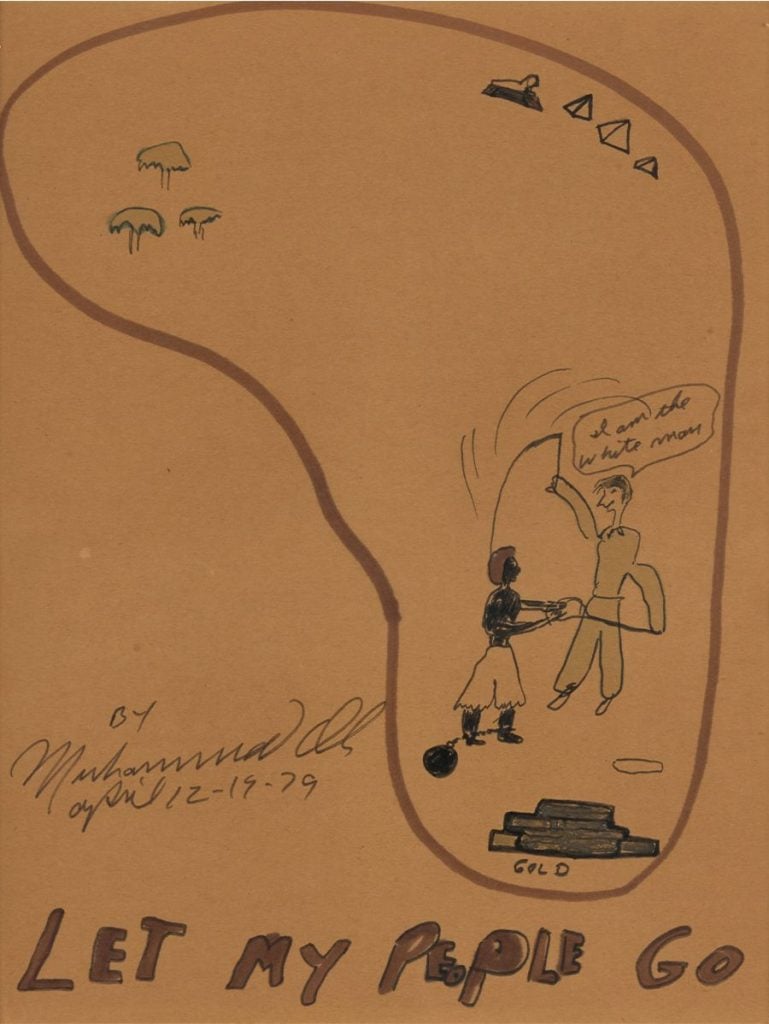
Muhammad Ali, Let My People Go (1979). Courtesy of Bonhams New York, collection of Rodney Hilton Brown.
Ten years later, in 1977, Hilton Brown approached Ali about embarking on another artistic project. It was at Hilton Brown’s New York apartment that Ali made the felt marker drawing Let My People Go on April 12, 1979.
The following day, Ali unveiled the piece, which originally depicted a white man whipping a black man, at the United Nations Special Committee Against Apartheid. As he shared the harrowing image, Ali read a poem: “Spread the word around the world/Tell both friend and foe/I’m fighting for freedom for South Africa/So, let my people go.”
The World Federation of United Nations Associations ended up commissioning a set of limited-edition serigraphs based on Let My People Go and four other Ali drawings—the set that was published by Hilton Fine Arts. But the U.N.’s behest, the white man was removed from the image to make it less inflammatory.
Some of those prints have surfaced at auction over the years, notably in a sale featuring the boxer’s art at New York’s RoGallery in 2016, held just days after Ali’s death. According to the Artnet Price Database, it is a copy of Let My People Go that currently holds Ali’s auction record for art, selling for $3,250 in February 2020 at Rago Auctions in New Jersey.

Muhammad Ali, My Trial (1967). Courtesy of Bonhams New York, collection of Rodney Hilton Brown.
The Bonhams sale, however, marks the first time that the original artworks on which the prints are based—including the uncensored Let My People Go—are coming to market, which the auction house expects to translate into numerous new record prices. (Memorabilia linked to Ali’s career in the ring commands considerable interest, such as the $358,500 sale of his “Rumble in the Jungle” championship belt at Heritage Auctions in Dallas in 2016.)
Let My People Go and Sting Like a Bee (1978), also from the U.N. project, could sell for between $40,000 and $60,000 each. The latter is a painting of Ali victorious in the ring, standing above a fallen opponent who attests to the champion’s self-professed ability to “float like a butterfly and sting like a bee.”
“This bold, colorful work is perhaps the most quintessential Ali painting,” Hilton Brown told Bonhams.
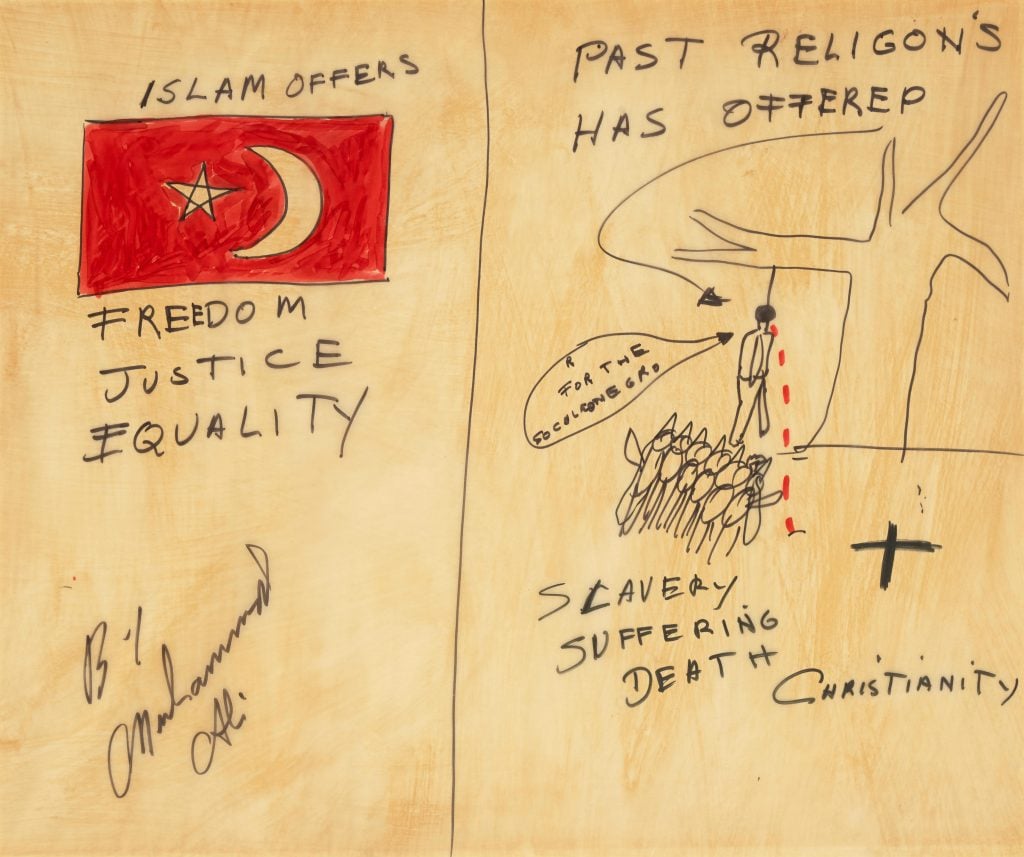
Muhammad Ali, The Two Religions (1967). Courtesy of Bonhams New York, collection of Rodney Hilton Brown.
Hilton Brown has also consigned the original drawings published in Avant Garde, such as My Trial, depicting Ali’s trial for refusing to join the U.S. Army during the Vietnam War; and The Two Religions, which explains his conversion to Islam. Both are expected to fetch between $20,000 and $30,000.
The Islamic flag “represent[s] freedom and justice,” Ali wrote in the magazine of the latter work. “On the other side, I have what past religions have offered the Negro: slavery, suffering, and death. The Christian so-called Negro is being lynched.”
Other pieces in the sale include the acrylic-on-board painting Eastern Sunrise (1979), which was also created at Hilton Brown’s apartment (est. $20,000–$30,000); the paint-smeared Masonite palette Ali used to make several of the works in the sale (est. $3,000–$5,000); and one of six editions of a plinth-mounted bronze cast of Ali’s right fist made in 1981.
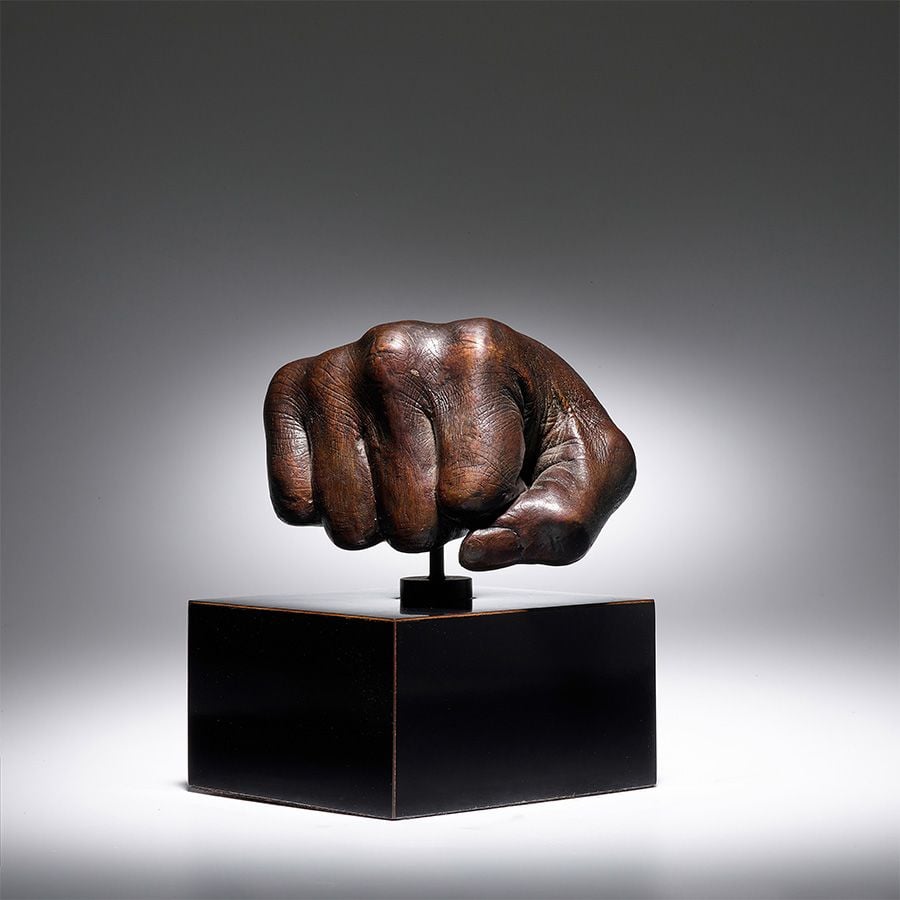
A bronze cast of Muhammad Ali’s right “knockout” fist, made by Rodney Hilton Brown (1981). Photo courtesy of Bonhams New York, collection of Rodney Hilton Brown.
“Ali rarely sat down for more than a few minutes at a time,” Hilton Brown recalled. “I invented a novel molding technique utilizing gel that was typically used for dental implants. While the gel would set in just a few minutes, it was a weaker structure and would collapse on itself in a few minutes. To prevent this, I created a second mixture, of plaster of paris, which I poured into the gel mold immediately after Ali’s fist was removed. The plaster successfully filled the gel cavity, holding the original form and hardening into the final mold within a few days. The end result was so well-done, even Ali’s fingerprints are clearly visible in the bronze.”
With an estimate of just $1,000 to $1,500, the bronze fist is actually quite the bargain—the Muhammad Ali Center in Louisville, Kentucky, recently launched a fundraiser selling a 20-piece edition of the sculptor Elliott Arkin’s Strength and Resistance, based on a 1998 plaster cast of Ali’s fist. Each one is priced at $25,000.
See more works from the sale below.

Muhammad Ali, Eastern Sunrise (1979). Courtesy of Bonhams New York, collection of Rodney Hilton Brown.

Muhammad Ali, Guiding Light (1978). Courtesy of Bonhams New York, collection of Rodney Hilton Brown.

Muhammad Ali, Mosque II (1978). Courtesy of Bonhams New York, collection of Rodney Hilton Brown.

Muhammad Ali, Under the Sun (1978). Courtesy of Bonhams New York, collection of Rodney Hilton Brown.

Muhammad Ali, Sunset With Tree of Life (1977). Courtesy of Bonhams New York, collection of Rodney Hilton Brown.

Muhammad Ali, Babe, Car and Black Star (1979). Courtesy of Bonhams New York, collection of Rodney Hilton Brown.

Muhammad Ali, Ali V Holmes (1980). Courtesy of Bonhams New York, collection of Rodney Hilton Brown.

Muhammad Ali, Everlast boxing gloves, size 14, worn by Ali during a charity boxing match (1977). Courtesy of Bonhams New York, collection of Rodney Hilton Brown.

Anco Bilt brand Masonite palette with paint residue, signed by Muhammad Ali. Photo courtesy of Bonhams New York, collection of Rodney Hilton Brown.

















